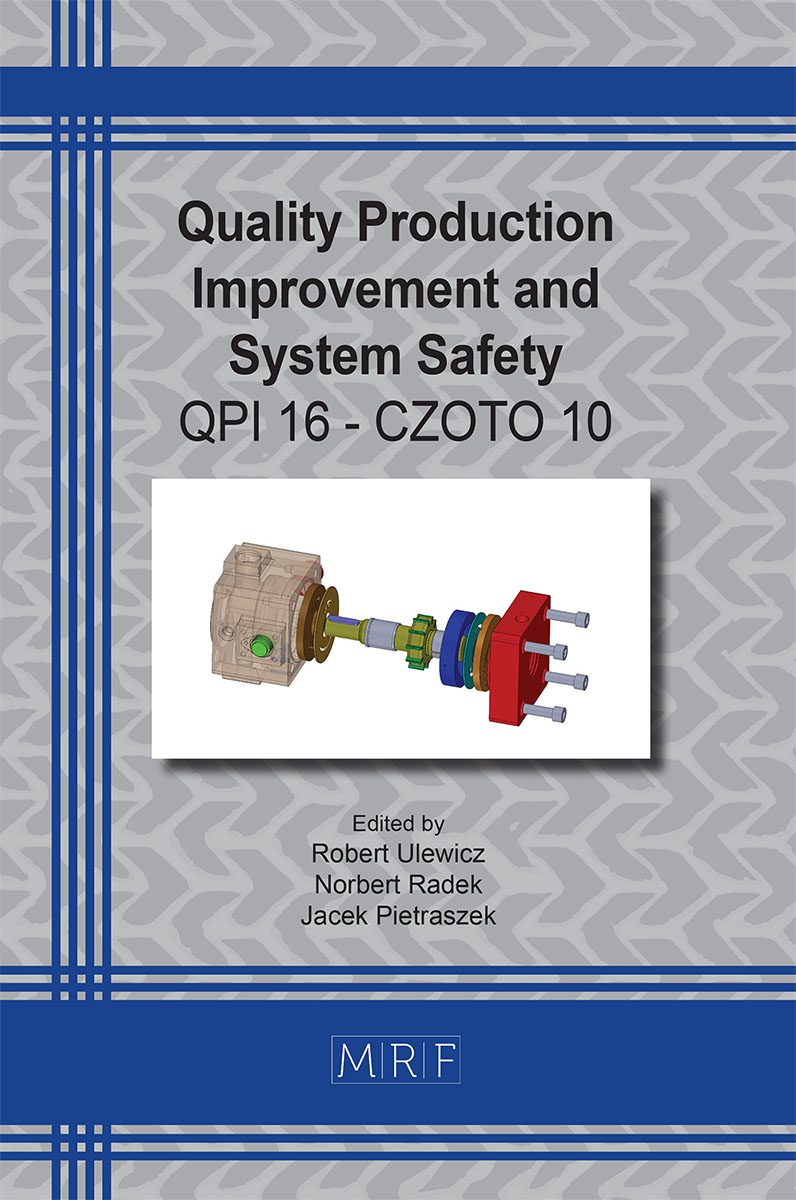Factors Determining the Perception of OHS by Socially Responsible Entrepreneurs
OLEJNICZAK-SZUSTER Katarzyna
download PDFAbstract. The study identifies the factors which determine the perception of occupational health and safety by socially responsible entrepreneurs. The research task set was carried out on the basis of an analysis of the literature on the subject and the results of surveys conducted in the third quarter of 2021, conducted among 164 entrepreneurs. In the empirical analysis workshop, logit models were estimated, in which determinants belonging to 5 categories were considered. On this basis, using the Gretl software, 8 logit models (4 full and 4 reduced) were built, indicating the relationships between the studied variables.
Keywords
CSR, OHS, Econometric Models
Published online 9/1/2023, 8 pages
Copyright © 2023 by the author(s)
Published under license by Materials Research Forum LLC., Millersville PA, USA
Citation: OLEJNICZAK-SZUSTER Katarzyna, Factors Determining the Perception of OHS by Socially Responsible Entrepreneurs, Materials Research Proceedings, Vol. 34, pp 422-429, 2023
DOI: https://doi.org/10.21741/9781644902691-49
The article was published as article 49 of the book Quality Production Improvement and System Safety
![]() Content from this work may be used under the terms of the Creative Commons Attribution 3.0 license. Any further distribution of this work must maintain attribution to the author(s) and the title of the work, journal citation and DOI.
Content from this work may be used under the terms of the Creative Commons Attribution 3.0 license. Any further distribution of this work must maintain attribution to the author(s) and the title of the work, journal citation and DOI.
References
[1] P. Ziółkowski, Metodyka szkoleń z zakresu bezpieczeństwa i higieny pracy, Wydawnictwo Uczelniane Wyższej Szkoły Gospodarki w Bydgoszczy, Bydgoszcz, 2018. ISBN 978-8365507228
[2] M. Mavroulidis et al. Occupational health and safety of multinational construction companies through evaluation of corporate social responsibility reports, J. Saf. Res. 81 (2022) 45-54. https://doi.org/10.1016/j.jsr.2022.01.005
[3] S. Väyrynen et al. Integrated Occupational Safety and Health Management, Springer, Geneva, 2015. ISBN 978-3319131795
[4] O. Fisscher. Het organiseren van morele competentie – Bedrijfsethiek, Gids voor Personeelmanagement 82 (2003) 12-18.
[5] A. McWilliams, D. Siegel. Corporate Social Responsibility: A Theory of the Firm Perspective. Acad. Manag. Rev. 26 (2001) 117-127. https://doi.org/10.5465/AMR.2001.4011987
[6] S. Cao et al. CSR gap and firm performance: An organizational justice perspective, J. Bus. Res. 158 (2023) art.113692. https://doi.org/10.1016/j.jbusres.2023.113692
[7] Z.Zhang et al. CSR is not a panacea: The influence of CSR on disgust and turnover intention, J. Vocat. Behav. 140 (2023) art.103821. https://doi.org/10.1016/j.jvb.2022.103821
[8] J. Allouche, P. Laroche. The Relationship between Corporate Social Responsibility and Corporate Financial Performance: A Survey, In: J. Allouche (Ed.), Corporate social Responsibility. Vol. 2: Performance and Stakeholders, Palgrave and Macmillan, New York (2006), 4-5.
[9] O. Farooq et al. The multiple pathways through which internal and external corporate social responsibility influence organizational identification and multifoci outcomes: The moderating role of cultural and social orientations, Acad. Manag. J. 60 (2017) 984-985. https://doi.org/10.5465/amj.2014.0849
[10] Y.K. Lee et al. The impact of CSR on relationship quality and relationship outcomes: A perspective of service employees, Int. J. Hospit. Manag. 31 (2012) 745-756. https://doi.org/10.1016/j.ijhm.2011.09.011
[11] M. Pęciłło, Zarządzanie bezpieczeństwem i higieną pracy a społeczna odpowiedzialność biznesu w ujęciu norm SA i ISO, Bezpieczeństwo pracy: Nauka i praktyka 2011(3) (2011) 19-21.
[12] N. Kusiak (Ed.). Przewodnik CSR po bezpiecznym i zrównoważonym środowisku pracy, Ministerstwo Funduszu i Polityki Regionalnej, Warszawa, 2021. ISBN 978-8376107097
[13] M. Gruszczyński. Mikroekonometria: modele i metody analizy danych indywidualnych. Wolters Kluwer, Warszawa, 2010. ISBN 978-8326451843
[14] M. Kunasz, E. Mazur-Wierzbicka. Factors Determining Perception of Mobbing and Sexual Harassment in the Working Environment – Research Results, Marketing i Rynek 11/2017 (2017) 29-36.
[15] D.W. Hosmer, S. Lemeshow. Applied Logistic Regression. Wiley, Hoboken, 2000. ISBN 0 471-35632-8.
[16] T. Kufel. Ekonometria Rozwiązywanie problemów z wykorzystaniem programu GRETL. PWN, Warszawa, 2023. ISBN 978-8301165130.












